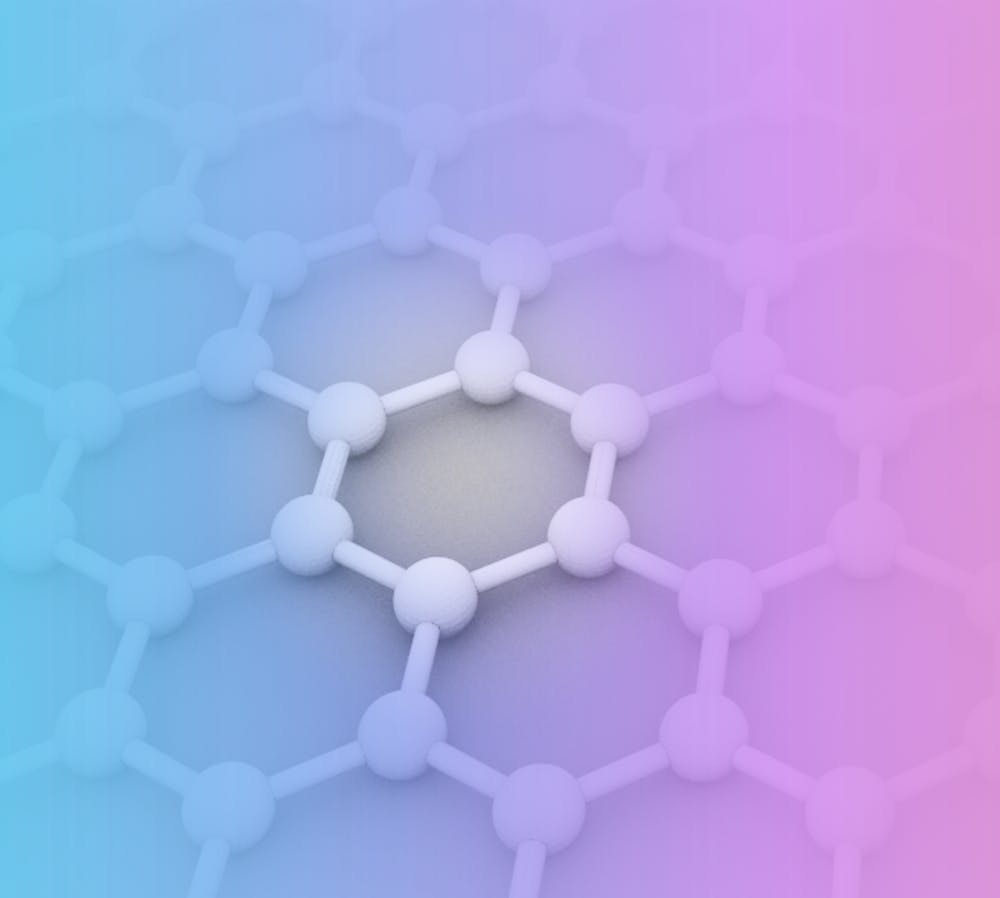In coming years, graphene — an incredibly strong and thin material — could replace current car batteries and other materials, making vehicles more environmentally friendly, University researchers found. Based on its chemical properties, graphene, when mixed with nickel, creates a viable composite that could act as the energy source for vehicles.
Chris Li, professor of mechanical and aerospace engineering, and research assistant Yunya Zhang published their research paper for the American Association for the Advancement of Science May 31. Their research, funded by the National Science Association, included the discovery of a mother-of-pearl-like graphene composite, opening a door to unlimited possibilities for new metal matrix composites. These new composites have the ability to work in high-heat environments including natural gas-powered engines, creating a more sustainable alternative to gasoline-powered vehicles.
“If you look at the number of publications on graphene in the past 10 to 20 years, it has gone up exponentially,” said Keivan Esfarjani, associate professor in the department of mechanical and aerospace engineering. “It has [a] really important impact on society.”
Graphene is the thinnest material known to man at one atom thick, yet it also happens to be one of the strongest materials — 100 to 300 times stronger than steel. It is an allotrope of carbon, meaning each carbon atom has four chemical bonds, three of which bond with another carbon, while the last is a freestanding bond. The carbon-carbon bonds are very strong, while the freestanding bond gives the atom mobility and conductivity.
This high conductivity comes from graphene’s high surface area, giving it a high capacity for energy storage, which can be applied to vehicles.
Zhang focuses his research on graphene and its composites. Inspired by nature and everyday life, he is working to reinforce metals and other materials with graphene.
“I like to find interesting things in our daily life,” Zhang said. “For the graphene composites, I was actually inspired by some natural structures like the seashell, the mother of pearl and seashells [that] have a layer by layer structure.”
Mother of pearl, otherwise known as nacre, is composed of hexagonal platelets of aragonite in thin layers, creating a combination of strength and toughness rarely seen in engineering materials. When creating most composites, the combination of two alloys can result in a composite that loses either ductility or toughness. However, by utilizing a nacre-like structure, the graphene and nickel composite experienced a 73 percent increase in strength and only a 28 percent compromise on stretching ability. The composite even retains high hardness up to 1000 degrees Celsius, or 1832 degrees Fahrenheit.
Replacing batteries and engines with graphene-enhanced material will help decrease energy consumption. In Li’s and Zhang’s experiment, graphene reacts with nickel to create nickel carbide, which can withstand extreme heat, giving it the potential to be used in natural gas-powered vehicles. Currently, the energy density of electric vehicle lithium-ion batteries is relatively low, but by implementing graphene into new battery systems, the batteries have the potential to store a lot more energy. However, sulfur batteries, when combined with graphene, look promising in enhancing vehicle energy capacity.
However, a challenge to this implementation is that graphene can cost hundreds of dollars per gram.
“When we think about vehicles, we need to think about the cost,” Zhang said. “Cost is always the priority. If we cannot reduce the cost of graphene, then we cannot apply a huge amount of graphene on the car.”
On a smaller, less expensive scale, graphene could be used to refine common technologies. It can be used to make flexible screens, and even flexible batteries, in phones and can possibly be used in 3D printing.
Zhang is looking to extend his research of graphene to 3D printing to replace the standard powders. A 3D printer builds an object layer by layer using non-traditional liquid ink or solid powder through a nozzle, thus creating limitations in strength and functionality. However, 3D printing using graphene ink has shown substantial improvements, especially in its ability to print finer layers and retain material function.
“People have envisioned using graphene in all kinds of electronic devices,” Esfarjani said. “So all its applications can relate to the environment.”
Zhang believes graphene is an environmentally-friendly material and says there is no research to prove otherwise. There are some safety concerns with the possibility of the extremely small structures of the molecule penetrating the human skin, but there is no information about the toxicity and other possible dangers.
Despite little information about the potential health risks, graphene’s ability to enhance energy storage, strength and conductivity enable it to be an effective building block that many industries can benefit from.







